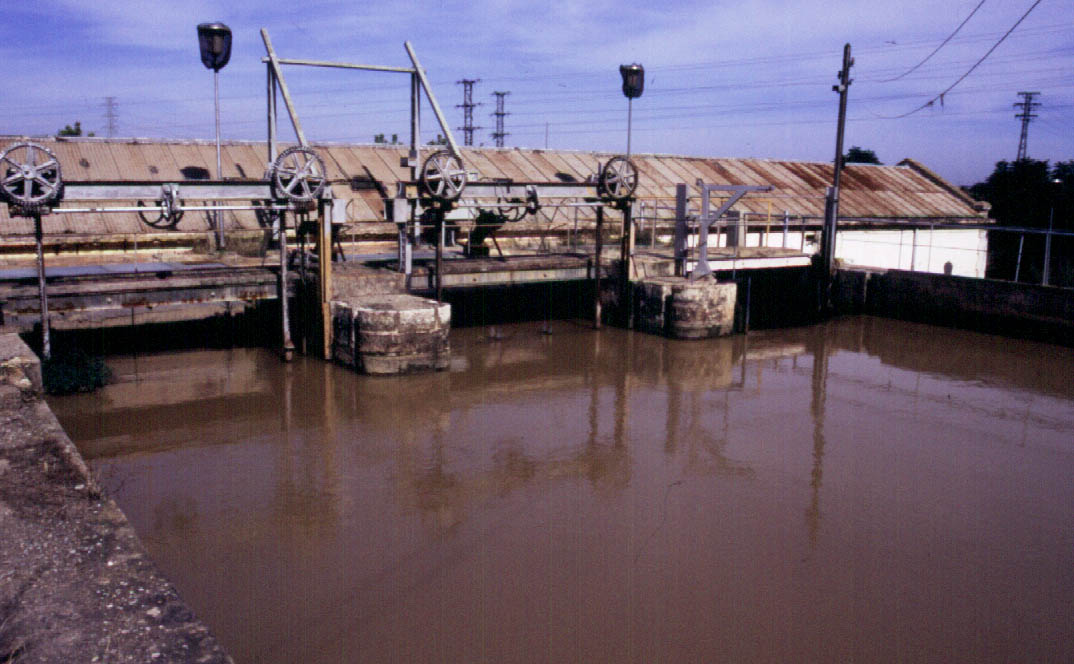
It is located on the banks of the Túria River, above the bottom and side of the Quart-Benàger-Faitanar irrigation canal, in the municipality of Manises, in the western area of the airport and just before starting to water the irrigated land of that town. To arrive there, it is necessary to go to Pascual Sanchis de Manises street, where there is a rural path that leads to the remains of the Daroqui mill and the Volta power station.
The mill has disappeared. Nowadays, the hydroelectric power station is still visible and in a good state of conservation.
19th-20th centuries
According to Guinot and Selma (unpublished, 2005) and Selma (2014), the Daroqui mill was a flour mill built on the same main irrigation canal of Quart-Benàger-Faitanar; its origins would date back to the middle of the 19th century. It was bought by the VOLTA electricity company and was destroyed in 1905 to build a check-drop for a hydroelectric power station, initially known as a light mill, which was located under the mill, attached to the bottom and side of the irrigation canal.
According to Lloría, Selma and Guinot in the inventory of real estate of ethnology of the GVA, and Selma in her Ph. D. Thesis (2014), it seems that currently there are no material elements left from the old mill of the 19th century. The entire complex is a new construction from the beginning of the 20th century when the VOLTA company's power station was built. It featured three long naves, adjacent to each other and arranged parallel to the course of the irrigation canal, in a W-E direction. The union between these two elements took place in the accumulation pond that the power station built and its check- drop, elements that are still in place. The pond also has an overflow that pours directly into the Túria River, shortly before the diversion weir of the Tormos irrigation canal. The naves are made of masonry and have a gable roof that slopes towards the long lateral sides facing north and south. The entrance to the power station is through the eastern façade. Next to it is the Daroqui divisor, equipped with three wooden gates and their lathe, which were used to divide the water between the power station and the Quart-Benàger-Faitanar irrigation canal; two of the gates were for the power station, and the other for the irrigation canal. The complex is protected by a brick cabin and there is another one on its side for the guards.
Declared an Asset of Local Relevance as a result of the Legislative Decree 73/2006, of 26th May, by which the Tribunal de les Aigües of the Vega de València was declared as an Asset of Intangible Cultural Interest.
- Catàleg de patrimoni del Pla d’Acció Territorial d’Ordenació i Dinamització de l’Horta de València. Element EPH_11.06. Central elèctrica Volta (Molí de Daroquí). pàg 481 - 484.
- Identificación y descripción de los sistemas de regadío de l’Horta. Confederación hidrográfica del Júcar.
- Direcció General del Patrimoni de la Generalitat Valenciana.
GUINOT, E i SELMA, S (2005, inèdit). Les séquies de l’Horta Sud de València: Rovella, Favara, Mislata-Xirivella, Benàger-Faitanar i Quart. València, Conselleria d’Agricultura-Generalitat Valenciana.
GUINOT, E.; SELMA, S., LLORIA, R. El patrimoni hidràulic de les séquies del Tribunal de les Aigües de València. Informe elaborat per a la Direcció General de Patrimoni de la Generalitat Valenciana, Conselleria de Cultura, València, 2003.
SELMA CASTELL, Sergi. Paisatges històrics, patrimoni i didàctica. (Les séquies i les hortes del Tribunal de les Aigües de València). Tesi doctoral publicada en PDF. Castelló, Universitat Jaume I de Castelló, 2014, pp. 407-408.
AMORÓS HERNÁNDEZ, Alejandro, “El molí de Daroqui a època elèctrica”, Revista Torrens: Estudis i Investigacions de Torrent i Comarca, ISSN 0212-5420, Nº. 13, 2003, págs. 193-204.
Photos: Càtedra L'Horta de València - Google Earth

















